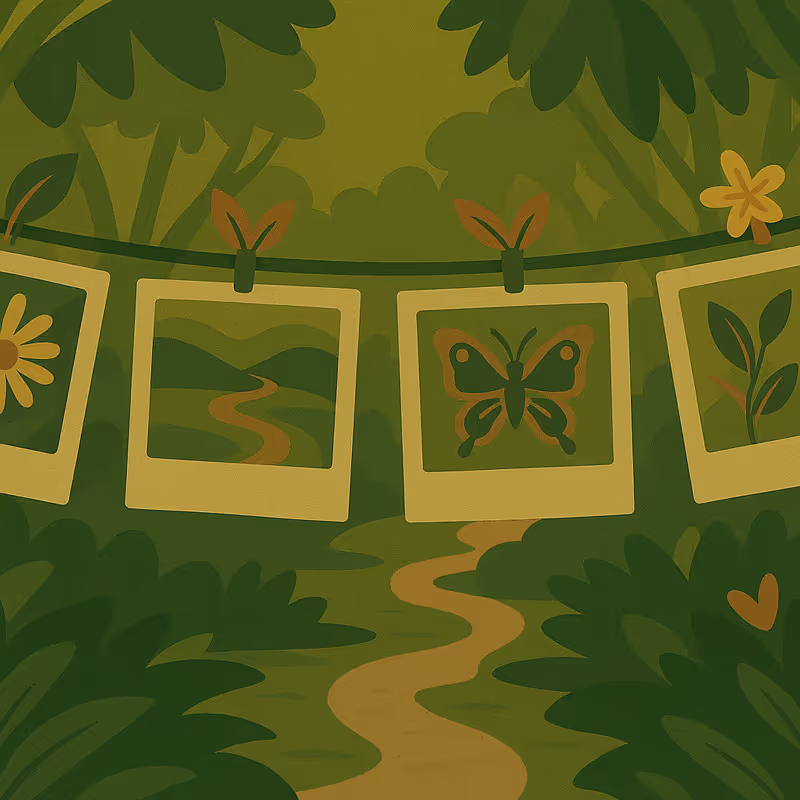Judging Process
Judging Criteria
To ensure the judging criteria do not favour participants with access to higher-quality equipment, focus on evaluating the strength of the story conveyed through the image:
- Creativity and Originality: How unique and compelling is the photograph?
- Technical Quality: Consider composition, clarity, and overall visual appeal.
- Impact and Storytelling: Does the image tell a story that supports biodiversity advocacy?
Evaluation Process
- Selecting a Judging Panel: Involve a cross section of the community, creating a balanced panel that reflects diverse perspectives and experiences. Consider inviting people with an interest in biodiversity, photographers, and members of the community.
- Public Voting Options: If applicable, allow community engagement through voting platforms while ensuring fairness and anonymity.
- Scoring System: Develop a structured rating scale to ensure a transparent and consistent selection process.
Displaying Photos
Displaying and Showcasing Photos:
- Select Photos to Display: Either display winning entries in each category, or a wider selection of photos depending on the available space and intention of the exhibition.
- Online Exhibitions: Create a website or digital gallery featuring winning entries.
- Social Media Campaigns: Share images with hashtags and tag relevant stakeholders to amplify reach.
- Public Displays: Organise exhibitions in community centres, government buildings, or educational institutions.
- Integration into Reports: Use compelling imagery in biodiversity discussions, research publications, strategy papers, or consultation documents, where visuals can strengthen arguments and public accountability.
- Keepsakes: you might consider putting the photos in cards, post-cards or mugs. In this case ensure that the contributors are fully credited and (if applicable) adequately recompensed for their photos.
Potential Impact
In the PLANET4B agrobiodiversity case study, the photo contest method was particularly successful in capturing a diversity of life and experience within the garden, as well as how different people relate to agrobiodiversity. The colours and the shapes of photos were judged to be particularly appealing. Understanding the potential impacts of a biodiversity photo contest can help anticipate the kinds of changes it may support and plan for how these can be recognised and strengthened over time. Impacts can occur at multiple levels, from individual awareness to broader community engagement.
In this video Borbála Lipka explains some of the impacts of contributing to the Biodiversity Photo Contest:
Intrapersonal change takes place within an individual, involving shifts in knowledge, attitudes, emotions, or skills.
- Self-reflection and personal growth: Selecting and submitting a photo can prompt participants to notice details in their surroundings and reflect on their relationship with nature. This can heighten awareness of biodiversity and foster a sense of pride or responsibility for local environments.
- Connection to place: Observing and capturing images may deepen appreciation for familiar spaces, strengthening emotional ties to gardens, community spaces, or local landscapes.
Interpersonal change occurs between people, who influence and learn from each other through shared experiences and dialogue.
- Knowledge exchange and inspiration: Viewing others’ photographs can introduce new perspectives and ideas for engaging with nature, prompting conversations about species, habitats, or practices captured in the images.
- Shared enjoyment and recognition: Exhibitions or online galleries can create moments of connection between participants, photographers, and viewers, fostering mutual appreciation.
- Building community: and connecting with like-minded growers.
Community-level change involves shifts in the practices, norms, or structures of a group, organisation, or place-based network.
- Strengthening local identity and pride: Showcasing images from a shared area can reinforce a sense of belonging and collective care for local environments.
- Catalysing local initiatives: Conversations sparked by the images might lead to collaborative projects such as clean-up days, planting schemes, or educational events.
Wider societal change happens when the contest’s influence extends beyond the immediate participant group.
- Raising visibility of environmental themes: Public exhibitions, media coverage, or online sharing can bring biodiversity and nature–society relations into wider discussion.
- Shaping narratives and priorities: The contest can influence how biodiversity is valued and represented, positioning it as relevant to everyday life, cultural identity, climate action, and informing broader agendas on sustainability.
- Informing practice and strategy: The pictures can be integrated into reports, consultation documents, or exhibitions, contributing to how biodiversity priorities are communicated and discussed.
- Sustaining engagement: The relationships and outputs generated by the contest can continue beyond the event itself, supporting ongoing dialogue with communities.
Ways to Measure Impact:
For more detailed guidance on measuring change, see the Impact module. Three techniques that may work well include:
- Engagement Analytics: Track social media shares, website visits, people who attended events etc.,
- Community Feedback: Gather testimonials from contributors, if you host an exhibition of the photos then you could have a feedback QR code, or book.
- Follow-up Initiatives: Encourage ongoing biodiversity documentation beyond the contest period.
In this video Borbála Lipka discusses some of the potential impacts of the Biodiversity Photo Contest:
Adaptations and Innovations
- Audio Biodiversity Recording: Participants could submit recordings of birdsong, insect activity, or urban noise pollution to complement visual documentation.
- Public Voting System: Instead of a judging panel, open voting could allow peer evaluation, though anonymity measures must be in place to ensure fairness.
- Thematic Categories: Future versions of the contest could focus on specific themes, such as edible biodiversity, medicinal plants, or seasonal biodiversity changes.
- Community Exhibitions: Winning photographs could be displayed in local exhibitions, schools, businesses, or government offices to increase outreach impact.























